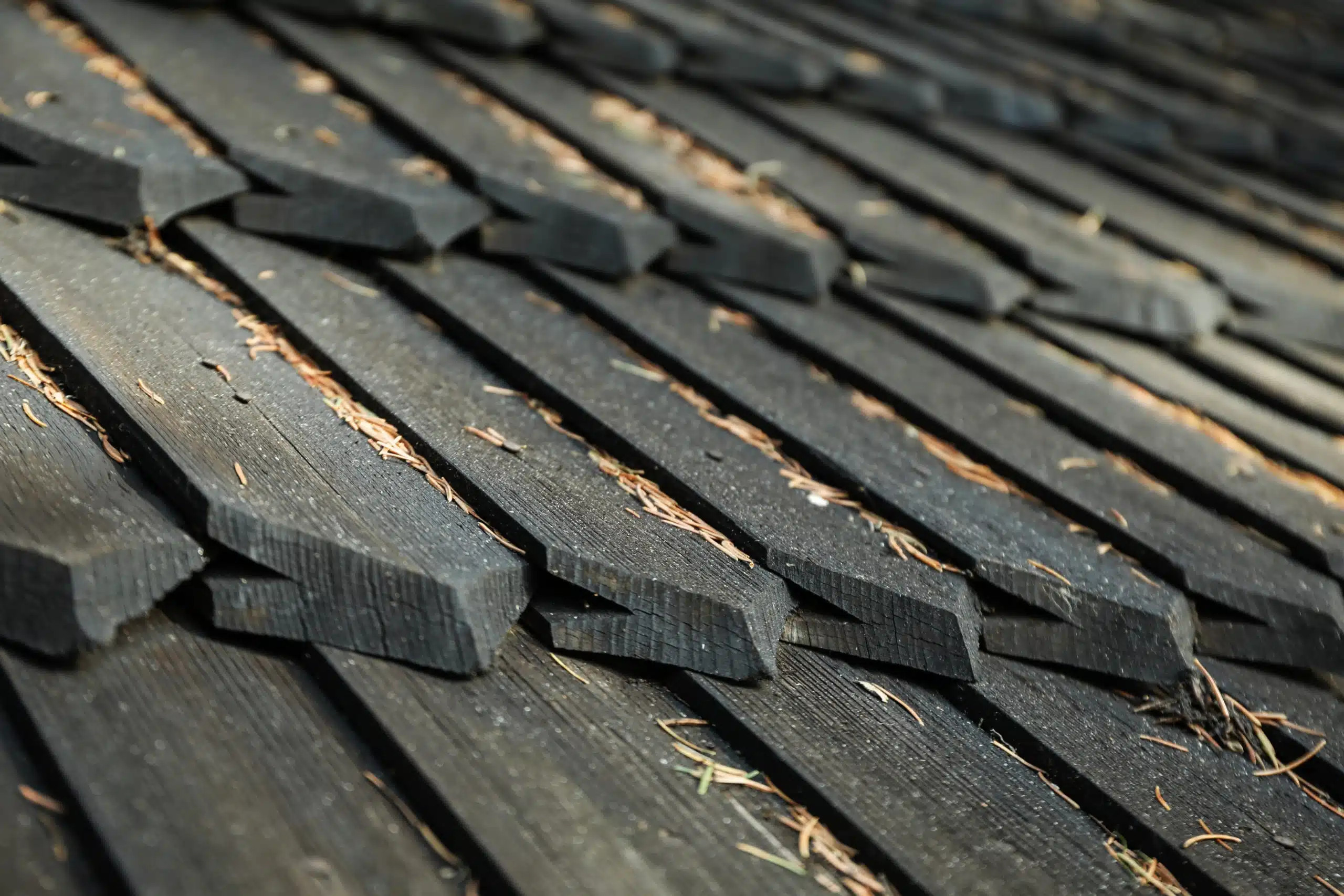
Hurricanes threaten millions of homes each year. Losses from Hurricane Katrina alone totaled 89.7 billion dollars. (III, Facts + Statistics: Hurricanes).
For homeowners, one of the dangers they face when a hurricane approaches is damage to the roof. Acute damage and structural weakening are possibilities.
It’s important to understand what types of roof damage may occur, especially when the damage isn’t immediately visible from a distance.
The Insurance Claim HQ attorneys explain the types of hurricane roof damage.
7 Types of Hurricane Roof Damage
1. Shingle damage
Shingle damage can take many forms. A shingle may be completely missing or torn. Even if the shingle appears intact, nails or staples may be loosened. Sealing may be damaged. This damage can cause the roof to age prematurely, requiring you to replace it sooner than you would have.
Another possibility is granule loss, which is a loss of small particles on the shingles that protect the roof from UV rays and other things. A thin, horizontal line on the shingles may mean granule loss. In addition, you may see granule debris scattered on the roof or in gutters.
In several ways, missing, damaged, and compromised shingles can expose your home to more significant damage. You may have water leaks, and water may damage the attic or the home’s interior. Heating and cooling may be more expensive, and you may be more susceptible to pest infestations.
2. Water damage
Hurricanes typically bring heavy rain. Combined with other damage to the roof, water may enter your home. Water may leak into the attic. You may notice discoloration on the ceilings or walls. These are signs that water has breached the roof and entered the home.
A water leak isn’t just a matter of unattractive discoloration. It may contribute to mold and fungal growth. The structure of the home may warp, creating a dangerous condition.
3. Dents, punctures, and cracks
Hurricanes bring not only high winds but also hail and blowing debris. When objects strike the roof at high speeds, they may cause dents, punctures, and cracks to many of the roof’s components. The damage may chip away at shingles or cause them to tear. If flashing is damaged, it may allow water to enter the home.
4. Fallen debris
Falling debris can damage the structure of your roof. Damage may be catastrophic if a tree or other large object strikes the roof. Debris that comes to rest on the roof can stop water from draining correctly. The pools of water can then enter the home and cause damage.
5. Gutter clogs and damage
Debris is a type of hurricane damage that can clog gutters. In addition, wind and striking objects may cause gutters to sag. Gutters may break apart from the home. Damaged gutters may allow water to accumulate in the wrong places, and water can enter the home.
6. Chimney damage
Several components of a chimney may be damaged in a hurricane. If the flashing is damaged, water damage may occur immediately or in the future. Damage to the chimney cap may allow moisture, animals, and debris to enter the home. Damage to the chimney crown may cause similar problems.
You may notice that the chimney appears crooked. It may have visible dents or chipped bricks. A chimney may suffer significant damage that is not immediately obvious by looking at it from the ground.
7. Skylight damage
Most skylights are made of glass or plastic. That makes them especially vulnerable to hurricane damage. Branches and debris can damage the skylight causing holes or leaks. In turn, this creates a vulnerable entry point for debris, rain, and animals, as well as heating and cooling inefficiency.
How to Check for Hurricane Damage to the Roof
The first consideration is your safety. It’s important to check for hurricane damage to your roof. Only look in ways that you can do so safely. Understand that the structure may be compromised, and additional dangers may exist.
Look for obvious signs of damage like torn shingles, damage to the chimney, skylight, or gutters. Pay particular attention to shingles that may be missing, cracked, or discolored, as well as crumbling. Look for dents and missing pieces. Look for water damage, and make a special note if water pools in the right way.
Inspect the attic and walls of the home for water damage. Determine if there are any sags in the structure of the home, including the flooring. See if there is a musty smell or moisture buildup on windows.
Attorneys for Hurricane Roof Damage Claims
Do you have an insurance claim for roof damage following a hurricane? Contact us at Insurance Claim HQ for a consultation regarding your claim. See how our attorneys can help.
